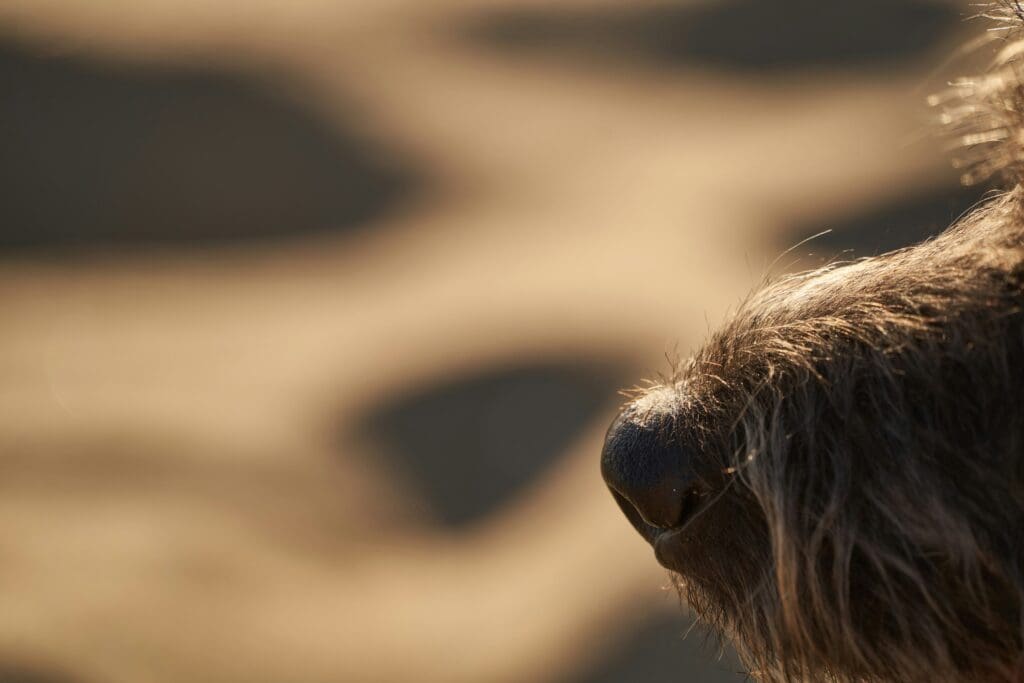How Dogs Use Their Nose to Communicate
While humans rely on words, tone, and facial expressions to communicate, dogs have a more subtle and complex system—one deeply rooted in scent. A dog’s nose isn’t just a super-powered sensor for survival; it’s a primary tool for social interaction and understanding the world around them.
From sniffing new friends to decoding territories, dogs constantly “talk” with their noses.
The Language of Scent
Dogs are pack animals by nature, and scent communication is key to maintaining harmony in the group. Every dog gives off a unique combination of pheromones and other scent markers that tell a story about who they are, what they’re feeling, and where they’ve been.
These scent cues can communicate:
-
Age
-
Sex
-
Emotional state
-
Health
-
Dominance or submission
-
Reproductive status
Unlike visual cues that fade quickly or vocal signals that can be missed, scent lingers, creating a lasting message.
Why Dogs Sniff Each Other’s Rear Ends
It might seem rude to us, but sniffing a fellow dog’s behind is the equivalent of a polite handshake or hug in the canine world. The anal glands produce strong-smelling secretions that offer a detailed scent profile of the dog.
This rear-end sniffing gives dogs important data, such as:
-
Whether the dog is male or female
-
If they’re in heat or recently gave birth
-
Their mood and overall health
-
If they’ve met before
It’s fast, efficient, and highly informative. Most greeting rituals among dogs begin with this quick (and sometimes awkward-looking) exchange.
Sniffing as Social Intelligence
Dogs often greet each other slowly and sniff extensively before initiating play or any physical interaction. This ritual helps avoid conflict by giving each dog the chance to assess the other. Think of it as an interview—sniffing helps determine whether the other dog is friendly, aggressive, anxious, or confident.
Dogs will also remember scent profiles long after the interaction. This means they can recognize familiar dogs by scent alone, even after long periods apart.
Marking Territory with Scent
In addition to receiving information, dogs also leave messages through scent. Urine marking, for example, serves as a way for dogs to:
-
Claim territory
-
Leave clues for other dogs
-
Signal their presence
-
Show confidence or dominance
Even a single sniff of a lamppost or fire hydrant can tell a dog how many dogs have passed through, their size, age, and even how long ago they were there. It’s like social media, but for dogs—and through scent instead of text.
How Dogs Use Their Nose with Humans
Dogs also use their nose to communicate with us. They might sniff your clothes to find out where you’ve been, or your skin to detect a change in your mood or health. It’s how they show curiosity, concern, or affection.
Some dogs will even use gentle nudging or repeated sniffing as a way of saying:
-
“I’m worried about you.”
-
“You smell like another animal.”
-
“Something’s different.”
This is one reason therapy dogs and service animals are so effective—they detect changes in our scent that indicate stress, fear, sadness, or danger.
Scent and Memory
Because dogs associate people and other animals with scent, it plays a huge role in memory and recognition. A dog might react excitedly to someone they haven’t seen in years—not by their face, but by their smell.
Even long after a dog has left a park or passed by a trail, their scent remains. When another dog sniffs that trail, they’re essentially “reading” the past.
Respecting the Sniff
Dogs often get scolded or rushed during walks when they stop to sniff another dog or a particularly interesting patch of grass. But to a dog, this is essential social behavior—it’s their way of learning and connecting.
Here’s how you can support your dog’s need to sniff:
-
Give them time on walks to explore smells and scent trails.
-
Let them greet other dogs (safely and calmly) if both seem comfortable.
-
Avoid rushing the process—sniffing is how dogs “catch up” with one another.
-
Use sniffing as a training opportunity, rewarding calm, respectful greetings.
Final Thoughts
A dog’s nose is more than just a powerful tool—it’s a social bridge. Dogs communicate volumes through scent, from understanding strangers to remembering old friends. By allowing your dog the space and time to sniff, you’re giving them the chance to express themselves, gather information, and thrive socially.
So next time your pup pauses on a walk to sniff a patch of grass for the tenth time, remember: they’re not being stubborn—they’re talking.

